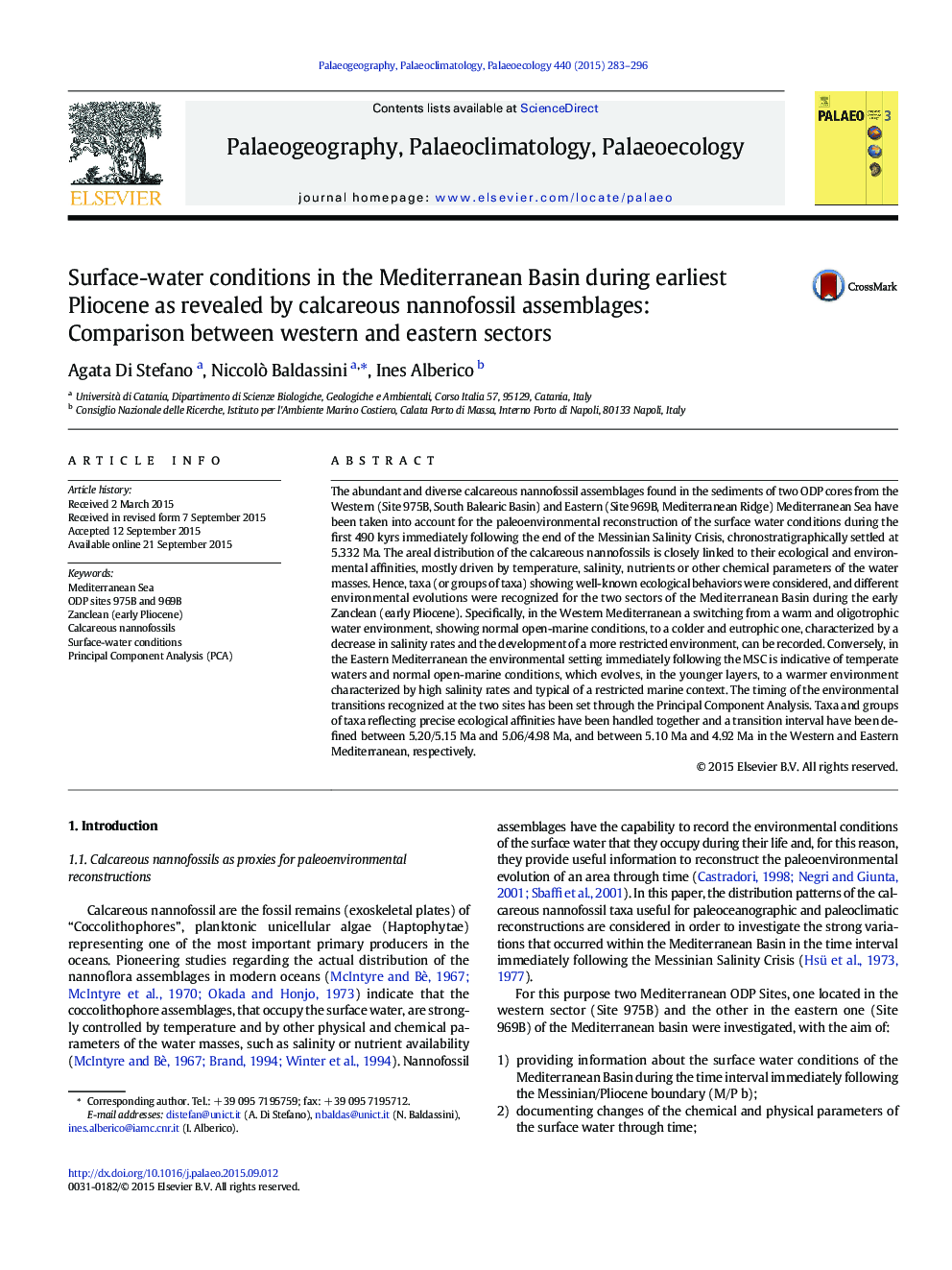| کد مقاله | کد نشریه | سال انتشار | مقاله انگلیسی | نسخه تمام متن |
|---|---|---|---|---|
| 6349517 | 1622150 | 2015 | 14 صفحه PDF | دانلود رایگان |
عنوان انگلیسی مقاله ISI
Surface-water conditions in the Mediterranean Basin during earliest Pliocene as revealed by calcareous nannofossil assemblages: Comparison between western and eastern sectors
ترجمه فارسی عنوان
شرایط آب سطحی در حوضه دریای مدیترانه در ابتدای پیلووسن به وسیله مجموعه نانوفسالی های آهکی نشان داده شده است: مقایسه بین بخش های غربی و شرقی
دانلود مقاله + سفارش ترجمه
دانلود مقاله ISI انگلیسی
رایگان برای ایرانیان
کلمات کلیدی
موضوعات مرتبط
مهندسی و علوم پایه
علوم زمین و سیارات
فرآیندهای سطح زمین
چکیده انگلیسی
The abundant and diverse calcareous nannofossil assemblages found in the sediments of two ODP cores from the Western (Site 975B, South Balearic Basin) and Eastern (Site 969B, Mediterranean Ridge) Mediterranean Sea have been taken into account for the paleoenvironmental reconstruction of the surface water conditions during the first 490Â kyrs immediately following the end of the Messinian Salinity Crisis, chronostratigraphically settled at 5.332Â Ma. The areal distribution of the calcareous nannofossils is closely linked to their ecological and environmental affinities, mostly driven by temperature, salinity, nutrients or other chemical parameters of the water masses. Hence, taxa (or groups of taxa) showing well-known ecological behaviors were considered, and different environmental evolutions were recognized for the two sectors of the Mediterranean Basin during the early Zanclean (early Pliocene). Specifically, in the Western Mediterranean a switching from a warm and oligotrophic water environment, showing normal open-marine conditions, to a colder and eutrophic one, characterized by a decrease in salinity rates and the development of a more restricted environment, can be recorded. Conversely, in the Eastern Mediterranean the environmental setting immediately following the MSC is indicative of temperate waters and normal open-marine conditions, which evolves, in the younger layers, to a warmer environment characterized by high salinity rates and typical of a restricted marine context. The timing of the environmental transitions recognized at the two sites has been set through the Principal Component Analysis. Taxa and groups of taxa reflecting precise ecological affinities have been handled together and a transition interval have been defined between 5.20/5.15Â Ma and 5.06/4.98Â Ma, and between 5.10Â Ma and 4.92Â Ma in the Western and Eastern Mediterranean, respectively.
ناشر
Database: Elsevier - ScienceDirect (ساینس دایرکت)
Journal: Palaeogeography, Palaeoclimatology, Palaeoecology - Volume 440, 15 December 2015, Pages 283-296
Journal: Palaeogeography, Palaeoclimatology, Palaeoecology - Volume 440, 15 December 2015, Pages 283-296
نویسندگان
Agata Di Stefano, Niccolò Baldassini, Ines Alberico,
